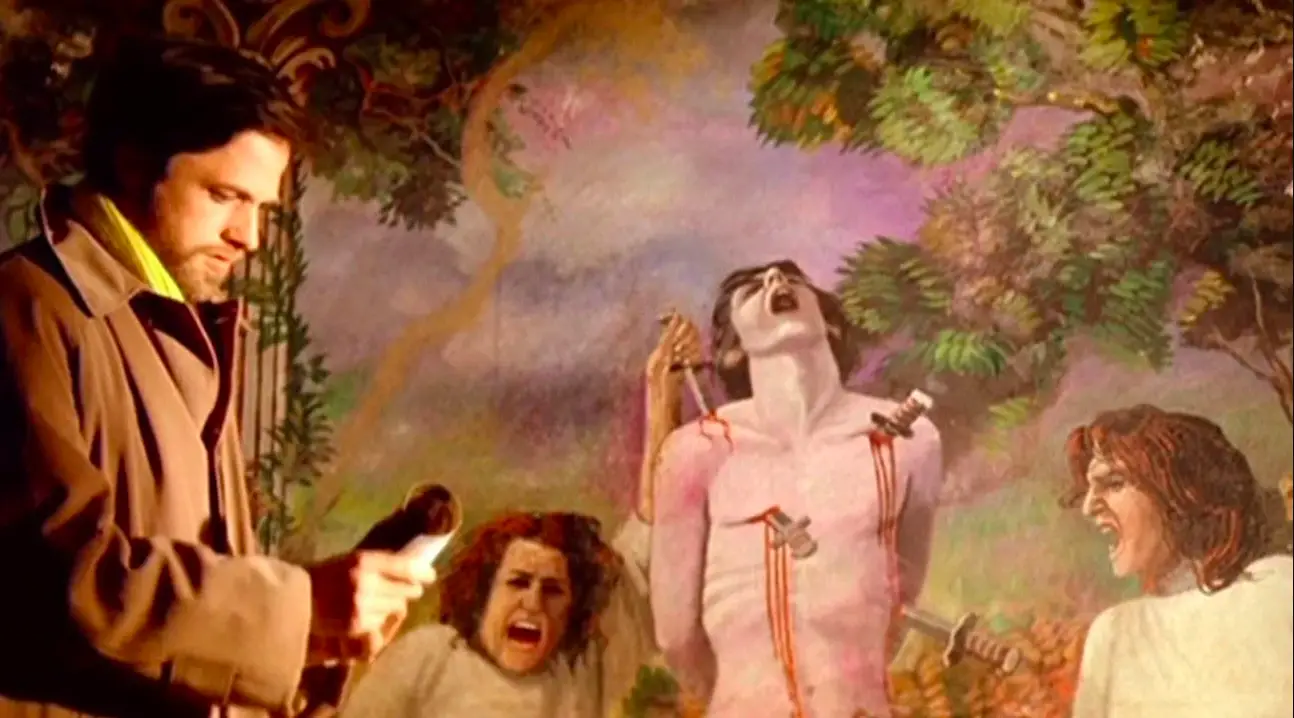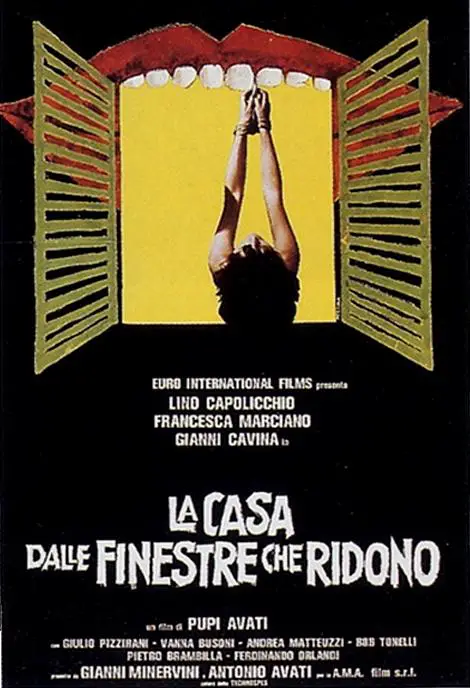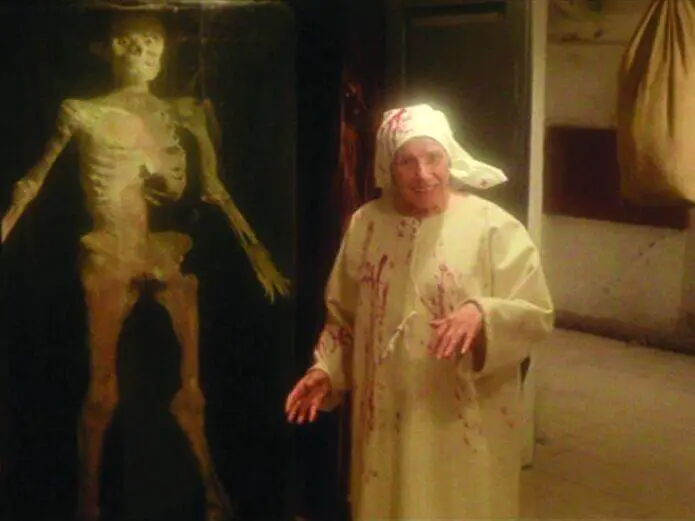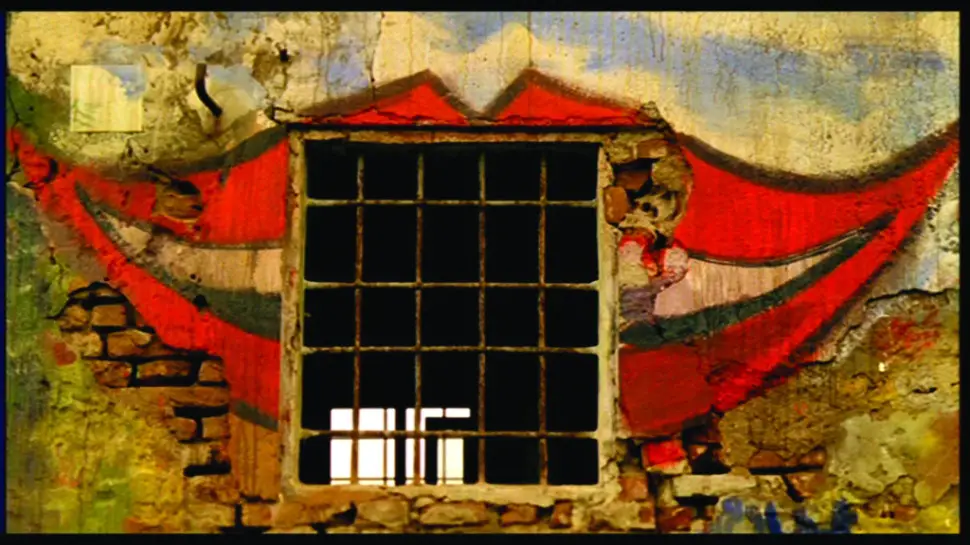From Wikipedia, the free encyclopedia
| The House With Laughing Windows | |
|---|---|

Italian film poster |
|
| Directed by | Pupi Avati |
| Screenplay by |
|
| Story by |
|
| Produced by |
|
| Starring |
|
| Cinematography | Pasquale Rachini[1] |
| Edited by | Giusuppe Baghdighian[1] |
| Music by | Amedeo Tommassi[1] |
|
Production |
A.M.A. Film |
| Distributed by | Euro International Films |
|
Release date |
|
|
Running time |
110 minutes[1] |
| Country | Italy[1] |
| Box office | ₤722.135 million |
The House with Laughing Windows (Italian: La casa dalle finestre che ridono) is a 1976 Italian giallo film co-written and directed by Pupi Avati. The film was shot in Lido degli Scacchi in the Ferrara province of the Emilia-Romagna region in northern Italy.
Plot[edit]
Stefano (Lino Capolicchio) arrives in a village of the Valli di Comacchio area where he has been employed to restore a fresco depicting what appears to be the martyrdom of Saint Sebastian, which has been painted on a rotting wall of the local church by a mysterious, long-dead artist named Legnani. While temporarily taking up residence in the house that had been previously owned by the two sisters of the deceased painter, Stefano begins a romance with a new, beautiful schoolteacher, Francesca (Francesca Marciano), meanwhile learning from various townspeople that the painter had been a madman who had derived his art from real life. Specifically, Stefano learns that the artist — assisted by his two equally-insane sisters — had been a killer who brutally tortured people to death as inspiration for his horrific paintings — a practice that had likely been used for the very painting he is in process of restoring. As Stefano is discouraged for his task throughout the town, some of the villagers are brutally killed — including his employer — and he comes to suspect that their murderer is trying to deter him from discovering the full truth behind the artist and his ominous legacy within the sleepy community.
Cast[edit]
- Lino Capolicchio as Stefano
- Francesca Marciano as Francesca
- Gianni Cavina as Coppola
- Giulio Pizzirani as Antonio Mazza
- Vanna Busoni as Teacher
- Andrea Matteuzzi as Poppi
- Bob Tonelli as Solmi
- Pietro Brambilla as Lidio
- Ferdinando Orlandi as Marshall
- Ines Ciaschetti as Concierge
- Flavia Giorgi as Poppi’s Wife
- Eugene Walter as Priest
- Carla Astolfi as Chambermaid
- Tonino Corazzari as Buono Legnani
- Pina Borione as Laura Legnani
- John Marquette as Saint Sebastian in fresco (uncredited)
Production[edit]
|
This section needs expansion. You can help by adding to it. (December 2014) |
The idea for The House With Laughing Windows came from a story director Pupi Avati had heard as a child involving the exhumation of a priest in the village of Sasso Marconi.[2] An early draft of the script was developed in the early 1970s under the title La luce dell’ultimo piano which was written by both Avati and Antonion Troisio.[3] It was produced by Antonio Cuomo who later backed out of the project.[3] Avati began working on the script again after the financial failure of his film House of Pleasure for Women and made several changes to the character and story.[3] The final story and screenplay was credited to Pupi Avati and Antonio Avati.[1]
The House with Laughing Windows was the first film produced by director Pupi Avati’s company A.M.A. Film.[1][4] The film was shot over five weeks between April and May 1976 in Comacchio and Minerbio, Ferrara, Italy.[1][4] Although the credits state Incir-De Paolis Studios in Rome, this was purely listed for bureaucratic reasons.[1][4][5]
Release[edit]
The House with Laughing Windows was distributed theatrically in Italy by Euro International Films where on 16 August 1976.[1] On its domestic release, the film grossed a total of 722,135,201 Italian lire.[1]
The House with Laughing Windows was released on Region 1 DVD on 18 March 2003 through Paradox Entertainment.[6] On 5 January 2010 the film was released on Region 2 DVD through Metrodome.[7][8]
Reception[edit]
|
This section needs expansion. You can help by adding to it. (December 2014) |
The film has been received well by contemporary critics. AllMovie’s review of the film was favorable, giving it a rating of 3 out of 5, and writing that «[though] fans of typical Italian horror films may find House with the Windows That Laugh [sic] lacking in the stylistic excesses of many of its contemporary companion pieces, it exceeds its contemporaries in almost every other area,» and that it was «imbued with an overwhelming sense of dread that grows to an almost unbearable pitch.»[9]
On review aggregate Rotten Tomatoes, no score has yet been reached with only two critical ratings submitted.[10] The current ratings — both «fresh» — are from Emanuel Levy of emanuellevy.com, who gave the film a 3 out of 5, and Anton Bitel of Eye for Film, who gave the film a 4.5 out of 5, and wrote, «certainly a gripping giallo, but also an intelligent allegory of post-war Italy’s struggles to emerge from the Fascist outrages of its recent past.»[11]
Availability and legacy[edit]
On 9 August 2011 Trailers From Hell! uploaded a video segment on the film to YouTube, in which Eli Roth discusses his feelings on its merits and the giallo genre, opining that it is «a great place to start [into giallo]» and «amongst the best» of the genre, ultimately comparing the film to the work of Dario Argento, Mario Bava, and Lucio Fulci — «the masters of the giallo.»[12]
It was screened as an outstanding example of its genre at the British Film Institute in November 2019.[13]
See also[edit]
- List of Italian films of 1976
References[edit]
Footnotes[edit]
- ^ a b c d e f g h i j k l Curti 2017, p. 157.
- ^ Curti 2017, p. 159.
- ^ a b c Curti 2017, p. 160.
- ^ a b c Curti 2017, p. 158.
- ^ Curti 2017, p. 162.
- ^ «The House with Laughing Windows in Movies & TV». Amazon.com. 11 March 2003. Retrieved December 10, 2012.
- ^ «House With Laughing Windows DVD». CD Universe. Retrieved December 10, 2012.
- ^ «The House With Laughing Windows (Region 2) (Import) (DVD)». Tower.com. Retrieved December 10, 2012.[permanent dead link]
- ^ Buchanan, Jason. «House with Laughing Windows — Trailers, Reviews, Synopsis, Showtimes and Cast — AllMovie». AllMovie. Retrieved 29 July 2012.
- ^ «La Casa dalle finestre che ridono (The House of the Laughing Windows)». Rotten Tomatoes. Retrieved December 10, 2012.
- ^ Anton Bitel. «The House With Laughing Windows». Retrieved December 10, 2012.
- ^ «Eli Roth on THE HOUSE WITH THE LAUGHING WINDOWS». Trailers From Hell!. Archived from the original on 2021-12-13. Retrieved March 4, 2016.
- ^ «Buy cinema tickets for The House with Laughing Windows | BFI Southbank». BFI site. Retrieved 2019-11-29.
Sources[edit]
- Curti, Roberto (2017). Italian Gothic Horror Films, 1970-1979. McFarland. ISBN 978-1476629605.
External links[edit]
- The House with Laughing Windows at IMDb
- The House with Laughing Windows at AllMovie
- La Casa dalle finestre che ridono (The House with Laughing Windows) at Rotten Tomatoes
We will keep fighting for all libraries — stand with us!
Internet Archive Audio


Featured
- All Audio
- This Just In
- Grateful Dead
- Netlabels
- Old Time Radio
- 78 RPMs and Cylinder Recordings
Top
- Audio Books & Poetry
- Computers, Technology and Science
- Music, Arts & Culture
- News & Public Affairs
- Spirituality & Religion
- Podcasts
- Radio News Archive
Images


Featured
- All Images
- This Just In
- Flickr Commons
- Occupy Wall Street Flickr
- Cover Art
- USGS Maps
Top
- NASA Images
- Solar System Collection
- Ames Research Center
Software


Featured
- All Software
- This Just In
- Old School Emulation
- MS-DOS Games
- Historical Software
- Classic PC Games
- Software Library
Top
- Kodi Archive and Support File
- Vintage Software
- APK
- MS-DOS
- CD-ROM Software
- CD-ROM Software Library
- Software Sites
- Tucows Software Library
- Shareware CD-ROMs
- Software Capsules Compilation
- CD-ROM Images
- ZX Spectrum
- DOOM Level CD
Books


Featured
- All Books
- All Texts
- This Just In
- Smithsonian Libraries
- FEDLINK (US)
- Genealogy
- Lincoln Collection
Top
- American Libraries
- Canadian Libraries
- Universal Library
- Project Gutenberg
- Children’s Library
- Biodiversity Heritage Library
- Books by Language
- Additional Collections
Video


Featured
- All Video
- This Just In
- Prelinger Archives
- Democracy Now!
- Occupy Wall Street
- TV NSA Clip Library
Top
- Animation & Cartoons
- Arts & Music
- Computers & Technology
- Cultural & Academic Films
- Ephemeral Films
- Movies
- News & Public Affairs
- Spirituality & Religion
- Sports Videos
- Television
- Videogame Videos
- Vlogs
- Youth Media
Search the history of over 835 billion
web pages
on the Internet.
Search the Wayback Machine
Search icon
An illustration of a magnifying glass.
Mobile Apps
- Wayback Machine (iOS)
- Wayback Machine (Android)
Browser Extensions
- Chrome
- Firefox
- Safari
- Edge
Archive-It Subscription
- Explore the Collections
- Learn More
- Build Collections
Save Page Now
Capture a web page as it appears now for use as a trusted citation in the future.
Please enter a valid web address
- About
- Blog
- Projects
- Help
- Donate
- Contact
- Jobs
- Volunteer
- People
- About
- Blog
- Projects
- Help
-
Donate
Donate icon
An illustration of a heart shape - Contact
- Jobs
- Volunteer
- People
Video Item Preview
play8?>>
Flag this item for
-
Graphic Violence
-
Explicit Sexual Content
-
Hate Speech
-
Misinformation/Disinformation
-
Marketing/Phishing/Advertising
-
Misleading/Inaccurate/Missing Metadata
movies
The House With Laughing Windows 1976 Pupi Avati English Subs( 480 P)
- Topics
- Pupi Avati Giallo Italian Horror Mystery Thriller
Hard to find Rare Italian Horror Movie Giallo
- Addeddate
- 2023-04-07 22:05:35
- Identifier
- the-house-with-laughing-windows-1976-pupi-avati-english-subs-480-p
- Scanner
- Internet Archive HTML5 Uploader 1.7.0
plus-circle Add Review
plus-circle Add Review
comment
Reviews
There are no reviews yet. Be the first one to
write a review.
234
Views
5
Favorites
DOWNLOAD OPTIONS
download 1 file
H.264 IA download
download 1 file
ITEM TILE download
download 1 file
MPEG4 download
download 1 file
TORRENT download
download 113 Files
download 6 Original
SHOW ALL
IN COLLECTIONS
Community Video
Community Collections
Uploaded by
RCA SELECTAVISION
on
SIMILAR ITEMS (based on metadata)
Terms of Service (last updated 12/31/2014)
The House With Laughing Windows / Дом Со Смеющимися Окнами (a.k.a. La Casa Dalle Finestre Che Ridono) (1976)

Творческий тандем братьев Авати (в котором Пупи — режиссер, а Антонио — продюсер) без устали работает уже больше тридцати лет и до сих пор является серьезной силой в итальянском кино. Начав работать совместно в начале семидесятых, братья знали как взлеты, так и падения, и после очередного такого падения — провала их крупнобюджетной музыкальной комедии «Борделла» (Bordella (1976)), Антонио Авати вспомнил про сценарий (уже лет шесть пылившийся в его комоде), который мог бы стать идеальным кандидатом для недорогой реализации. Пригласив в соавторы для правки сценария двух своих обычных «подельников» — Джианни Кавина и Маурицио Констанцо (Gianni Cavina, Maurizio Costanzo), — братья Авати довольно быстро довели свою первоначальную идею «до ума» и летом 1976-го года приступили к съемкам в небольшой итальянской деревушке. По сути дела, это был чуть ли не «семейный» проект, потому что от начала и до конца над фильмом работало всего 12 человек (в то время как команда любого проекта «средней руки» начиналась человек с 
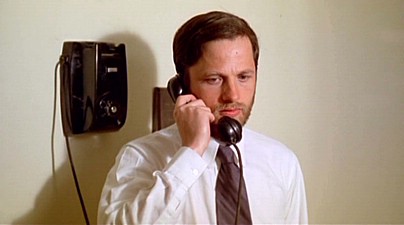
Молодой специалист по реставрации фресок, Стефано, по приглашению местного мэра приезжает в одну из итальянских деревень, где в небольшой церкви ему предстоит восстановить фреску сумасшедшего местного художника, изображающую страдания Святого Себастьяна. Поразившись натуралистичности живописания смертельных страданий святого, Стефано ознакомился и с другими работами местной знаменитости, на которых он не нашел ничего, кроме страданий и смерти. Деревенские жители, прознавшие про его работу, вели себя с ним замкнуто, а вскоре Стефано стал получать телефонные звонки, в которых зловещий сиплый голос советовал ему не трогать фреску и убираться из деревни. Было очевидно, что местные жители скрывают некую страшную тайну, относящуюся к личности художника и его работам, и правда оказалась шокирующей почище любого кошмара — свои шедевры страданий и смерти художник писал с натуры…
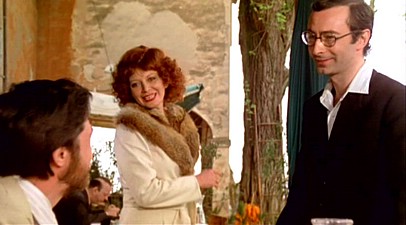
Довольно минималистичными изобразительными средствами Пупи Авати удалось достичь эффектной атмосферы некой жуткой тайны, которую вынуждены носить в себе все без исключения жители деревни, и неясной угрозы, постоянно преследующей Стефано. Многие эпизоды этого фильма идеально эксплуатируют универсальные человеческие страхи, как-то: боязнь темных пустых помещений старого дома, страх встретиться лицом к лицу с давно умершим художником (никто не видел момента его смерти — может, он жив и до сих пор?), жуткая тайна, разгадка которой может стоить человеку жизни и прочее. В лучших традициях самобытных итальянских триллеров, по ходу действия этого фильма зрителю подкладывают немало сюжетных сюрпризов, а концовка и вообще поразит многих, даже «видавших виды» поклонников джиалло, так что несмотря на довольно неторопливое развитие событий, зрительский интерес к картине не ослабевает, 
Как уже отмечалось выше, лента сделала в прокате весьма приличную кассу, причем не за счет массированной маркетинговой кампании, а благодаря людским рекомендациям, когда посмотревшие картину активно советовали сходить на фильм своим друзьям и 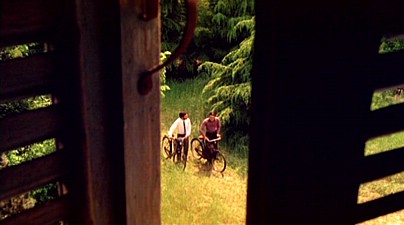
Copyright for all of the graphic materials on this page belongs to its respective
owners.
- Cast & crew
- User reviews
- Trivia
- 1976
- 1h 50m


Stefano, a young restorer, is commissioned to save a controversial mural located in the church of a small, isolated village.Stefano, a young restorer, is commissioned to save a controversial mural located in the church of a small, isolated village.Stefano, a young restorer, is commissioned to save a controversial mural located in the church of a small, isolated village.
See production, box office & company info
Videos1
More like this
Not your typical Giallo film
Pupi Avati’s ‘The House With Laughing Windows’ follows the character of Stefano, a painter who travels to a remote Italian village on a job to restore an unfinished painting depicting the persecution of St. Sebastian (who was a real Saint, by the way, only he was actually killed by arrows being shot into him, not by being stabbed with knives like the painting in the movie portrays). Upon arriving in the village, Stefano discovers that there is a lot more behind the mystery of the painting than he originally thought, and that someone will stop at nothing to make sure that Stefano does not complete the painting, further revealing the true mystery behind the town’s bizarre secrets.
The movie opens with graphic, sepia toned imagery of a man being tortured in the exact same way as St. Sebastian is depicted in the painting. The genuinely creepy piano music that plays during the opening just further sets the unsettling mood for the mystery that lies ahead. The opening credits lead one to believe that the film is an all out blood bath, however, this is not the case. In fact, the most violently unsettling part of the film is the opening, that’s not to say that the rest of the film doesn’t contain violence, it just doesn’t exist on the same level or extreme as the opening.
The rest of the film is a rather competent mystery done in true giallo fashion, and will keep you wondering what’s going to happen next until the climactic finale. There are a few story elements in this movie that were either unexplained or not elaborated on, but I don’t know if going as far as to call these incidents ‘plot holes’ would be completely correct. For instance, there is a girl Stefano is seeing at the beginning who just leaves town (disappears?) without a word. This had me thinking the whole movie that she was murdered and that her body would turn up at some point, when in fact you find out later in the film that she just simply left town, and was replaced by Stefano’s next love interest, Francesca.
The movie is pretty tame in comparison to many giallo flicks like ‘Tenebrae’ or ‘The New York Ripper’, but the twists and turns should interest most fans of this sub-genre. Also, unlike most giallos, the film contains only a brief bit of nudity, but there is a scene where a woman is being forcefully molested that seems more exploitative than most scenes depicting nudity.
All in all I must say I was surprised at the quality of movie I saw. Not only was it a surprise that I haven’t heard of this movie sooner, but it was also amongst some of the better plot driven giallo films I have personally seen. This movie was well paced, consisted of great camera-work and scenery, had great acting (to a non-speaker of Italian, anyway), and had a truly creepy and original plot. I recommend this film to anyone that is really into the Italian giallo sub-genre, as it may not hold the interest of the casual horror movie fan.
- drdebacle
- Sep 19, 2006
Contribute to this page
Suggest an edit or add missing content
By what name was La casa dalle finestre che ridono (1976) officially released in India in English?
Answer
Edit page
More to explore
Recently viewed
You have no recently viewed pages
Exactly 45 years ago, on August 16, 1976, «The house with laughing windows», the cult-movie by Pupi Avati ascribable to the so-called vein of the «Padano Gothic». In the film, the disturbing element of the peasant culture in which the Emilian director grew up and more exotic black suggestions, from Caribbean macumbas to self-sacrifice shared by the mystic and the madman, converge.
di Marco Maculotti
Originally published on INLAND: Pupi Avati, n. 10/2019, Bietti Publisher
«The first fear I felt is certainly linked to the rural tale and the relationship with death, which always recurs in peasant culture» [1], was able to confess Pupi Avati, revealing the first source from which his very personal poetics arose: that of «Gothic padano», a definition coined by industry experts to describe his peculiar homemade way of making horror films. A horror not nocturnal and dark, but rather panic e meridian, which hits its intended victim (the spectator) perpendicularly like the sun at its zenith in the countryside of Emilia-Romagna. An atavistic terror that sometimes emerges through the exhibition meshes of peasant tales told around the fire, on winter evenings, from the oldest to the youngest: precisely from that listening, Our was able to distill precious material for the purpose of building his very personal horror narrative system.
One must therefore think not of mere psychological madness, comparing himself with the painter Buono Legnani of The house with laughing windows: at a certain point in the film one speaks explicitly, referring to the nefarious work of these in league with the depraved sisters, of «sacrificial communions«, from «rites based on human sacrificesAnd of the «possibility that even today men can find contact with the dead through these practices», adding later that the three had come into contact with such forbidden practices in Brazil, where they had spent their childhood.
Ideally crossing the Atlantic and somehow syncretizing local folk traditions with Afro-American and Caribbean ones, Avati took inspiration from a series of journalistic alarms which, starting from the last twenty years of the nineteenth century, Brazilian newspapers dealt with: testimonies on ‘existence of «night sessions» and of fetishes, on the ambiguity of the practices and tools used — monstrous idols, unknown roots and suspicious liquids. It was then that we began to talk about «priests of evil cults«,»possession sessions«(macumbas) and «cursed associations», whose nocturnal rites were inspired by black spiritism of sub-Saharan origin and the adoration of orishas [2].
Esoteric suggestions ed exotic that the Italian cinema of those years adequately exploited with a handful of films, halfway between canonical horror and world movie, inspired by the traditional beliefs and ancestral rituals of those populations considered in some way «primitive» still in the second half of the twentieth century. Among the most deserving results are to be mentioned The serpent god by Piero Vivarelli (1970), The land of wild sex by Umberto Lenzi (1972) and The perfume of the lady in black by Francesco Barilli (1974).
Human sacrifices, as mentioned, are also involved in The house with laughing windows: as the narrative progresses, in fact, we discover how the young man who posed for the fresco of San Sebastiano was immolated by the mad painter with the complicity of his sisters, in the same way as many others whose first name. Nonetheless, we must not forget that the first sacrificial victim of the nefarious Emilia-Romagna rituals in question in the film is just the same. Good Legnani, whose immolation leads him to continue his existence in the Elsewhere of the Dead and of the disembodied spirits, from which he continues his own personal and ghostly conversation with the kinsmen.
On the one hand sacrifice and on the other, therefore, self sacrifice: the painter sprinkles himself with petrol and sets himself on fire, in an extreme gesture attributable to the entropic sphere of kaos magic which recalls the demonstrative actions of Buddhist monks in protest first against the Chinese occupation of Tibet, then against the US war in Vietnam. In doing so he did eternalize ritually in the act of transmuting into the funeral pyre that he will mark its ontological passage from the human condition to that larval and its reduction, simultaneously, to a skeleton and a spirit. It is good to remember, in this regard, how shamanic traditions teach that through meditation on the skeleton (which is at the same time what the entire human body is initially formed from and what remains at the end of the earthly experience) the shaman can ecstatically reach the world of spirits (which is also a realm of the dead), at the same time the Origin and the End of everything (exactly like the skeleton for the human being) and thus overcome the human condition himself.
More: Buono Legnani babbles, as if it were a «mount» for a loa Caribbean of colors that come out of his veins; is Terence mckenna reports of jivaro shamans, an Amerindian tribe living in the tangle of the Ecuadorian Amazon, who would be able to release, in a state of trance induced by the ingestion of ayahuasca, a sort of «purple or dark blue fluid, directly from the pores of your skin». They base a large part of their magical practice on this substance, thanks to which, spreading it on the ground, they are able to see in front of them «other places and other times» [3] (like the kingdom of the dead that the crazy painter has access to in Avati’s film). And again, we can detect Legnani’s longing a go back mystically to the Origin of things, sublimating oneself in coincidentia oppositorum of masculine and feminine (as well as the sister-priest, interpreted by Eugene Walter), and ideally returning to the «first form» of the Primordial Androgyne, prior to the separation of the sexes and to that — homologous, but placed on a higher archetypal-ontological level — between spirit and matter.
Obviously in the filmic mythopoiesis of Pupi Avati i topoi sacral now call back they look hideously reversed, causing for the Legnani, the sisters and the unfortunate countrymen the precipitation in the most unspeakable nightmare. It follows that, as also happens elsewhere within the cinematographic production of Our — for example in the following Zeder (1983) or in the TV series Voices of the night (1995) — although the characters boldly aim to cross the limit of human existence, they inevitably find themselves trapped in a kind of world totally other, obscure, distant and not geographically framed, since it is placed on a further dimensional plan e mysteriously tremendous [4].
Footnotes:
[1] Statements by Pupi Avati contained in Adamovit Ruggero, Bartolini Claudio, The Po Valley Gothic. Dialogue with Pupi Avati, Le Mani, Recco 2010, p. 49
[2] Gilberto Mazzoleni, Wizards and Messiahs of Brazil, Bulzoni, Rome 1993
[3] Terence McKenna, True hallucinations, ShaKe, Milan 2008, pp. 78-79
[4] Otto Rudolf, The sacred, SE, Milan 2009







